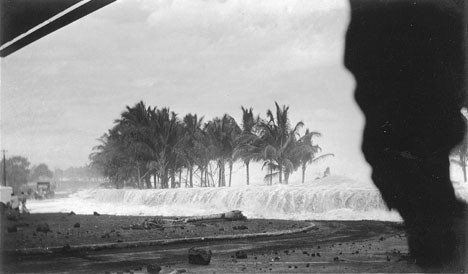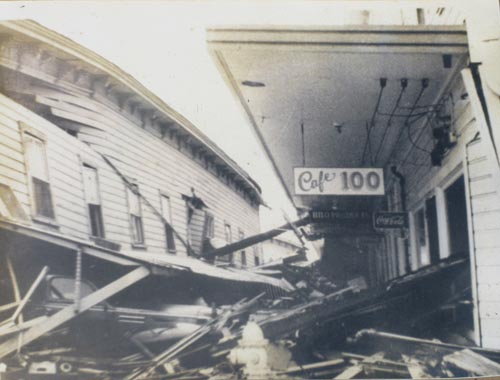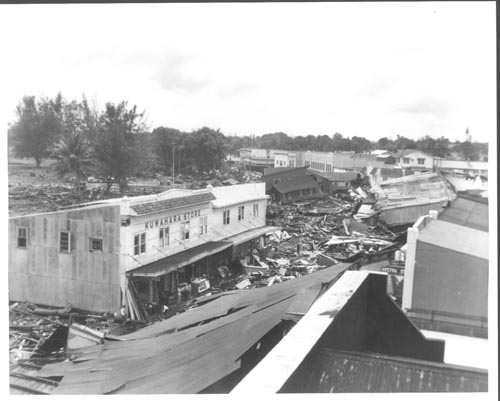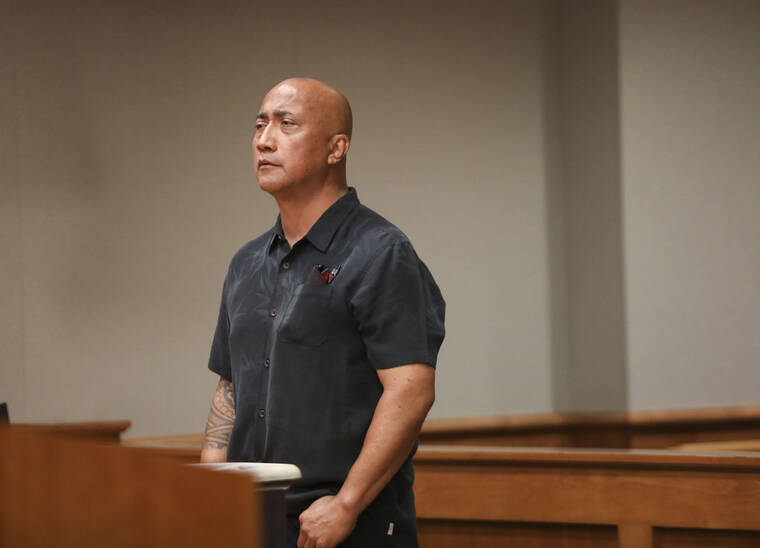Hilo residents remember 1946 killer tsunami

A wave from the 1946 tsunami in Hilo goes over a six-foot wall in Hilo. (Photo from Pacific Tsunami Museum)

Cafe 100 in Hilo is seen following the April 1, 1946 tsunami. Years later, owner Richard Miyashiro built a new restaurant which lasted only 23 days before being destroyed by the May 23, 1960 tsunami. Courtesy of Gail Miyashiro.

This picture shows the destruction after the Hilo tsunami on April 1, 1946.



HILO >> Three weeks after massive tsunamis killed thousands in northeastern Japan and swamped Big Island resorts, Hilo residents are remembering tsunamis that killed 159 people statewide 65 years ago.
Tsunamis generated by a magnitude-7.1 earthquake in the Aleutian Islands pounded Hilo on April 1, 1946.
Janet Kinoshita Fujimoto, now 74, told the Hawaii Tribune-Herald the waves spun her family’s two-story house on Piopio Street. Water rose to the 9-year-old’s chest.
"Then, all of a sudden, the wave started to recede, and it just pulled us. You could hear the sound of crackling from the other houses and our house breaking apart. We had another jolt, and then we stopped. It was pitch dark, no sound," said Fujimoto. "Then we heard the next-door neighbor calling. He said he lost his son, couldn’t find him. He slept in the basement, and they lost him."
Fujimoto and other Hilo tsunami survivors are due to speak at the 9th Annual Tsunami Story Festival on April 17 at the Pacific Tsunami Museum in Hilo. The theme is: "I grew up on Piopio Street."
The original Hilo Meshoin temple will also be remembered.
Don't miss out on what's happening!
Stay in touch with breaking news, as it happens, conveniently in your email inbox. It's FREE!
"We do this as a community service, to preserve the history of our community, and for knowledge and awareness about tsunamis," Donna Saiki, the museum’s director, said Wednesday.
Fujimoto’s family was unharmed, but their house was destroyed. "Our home was tilted at about a 45-degree angle," she said.
The state later declared the Piopio Street and Shinmachi neighborhoods tsunami areas and ordered them permanently evacuated. The remaining structures were demolished.
The tsunamis also killed 25 people at Laupahoehoe Point north of Hilo, including 16 students and five teachers at Laupahoehoe School.
Hawaii, which was still more than a decade from statehood, installed a territory-wide tsunami warning system in 1948 and used it during tsunamis that came in 1952 and 1957. Even so, the system was unable to prevent tsunamis generated by an earthquake off Chile from destroying much of downtown Hilo in May 1960.
Sixty-one people were killed in those tsunamis. The waves caused $23 million in damage.




